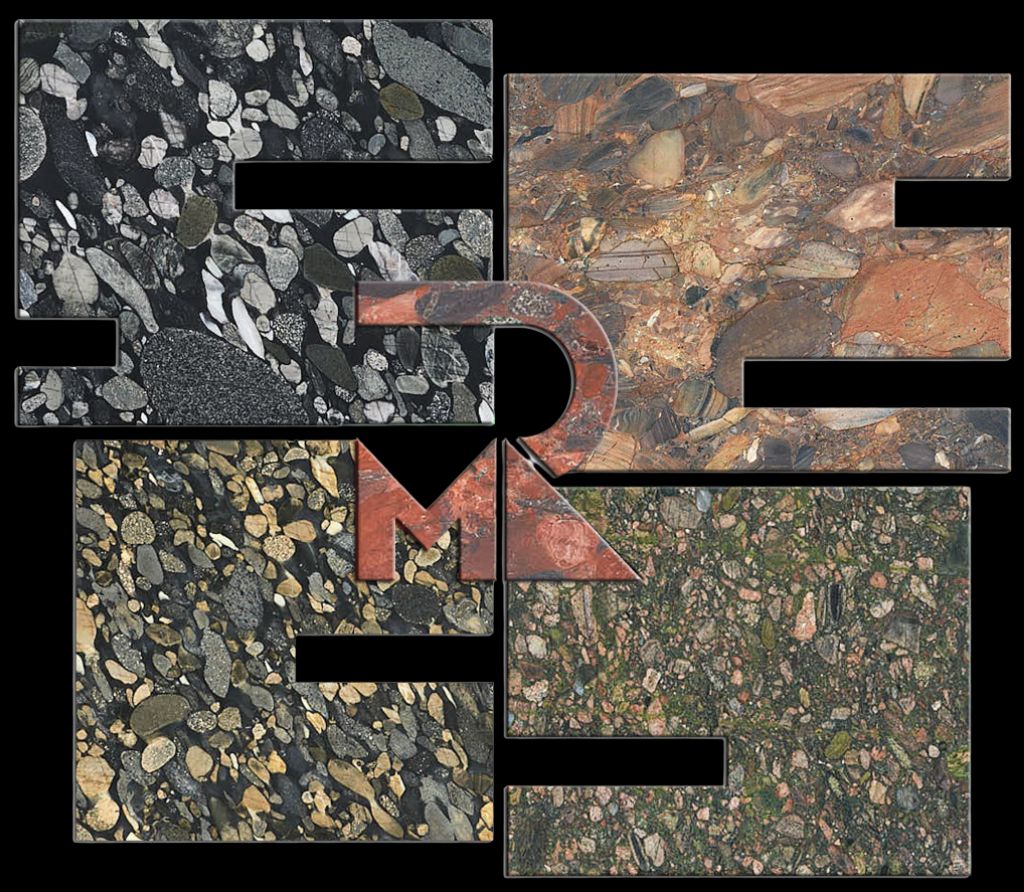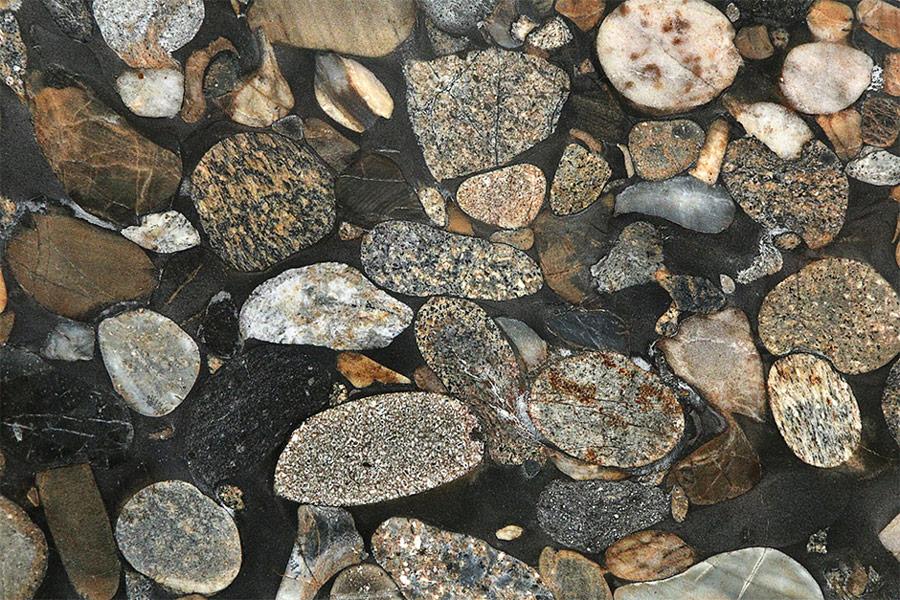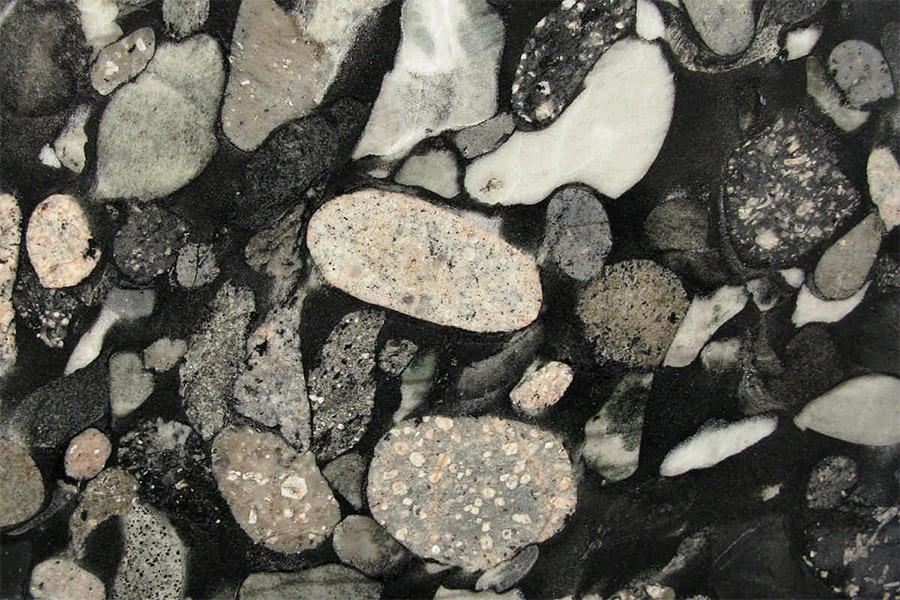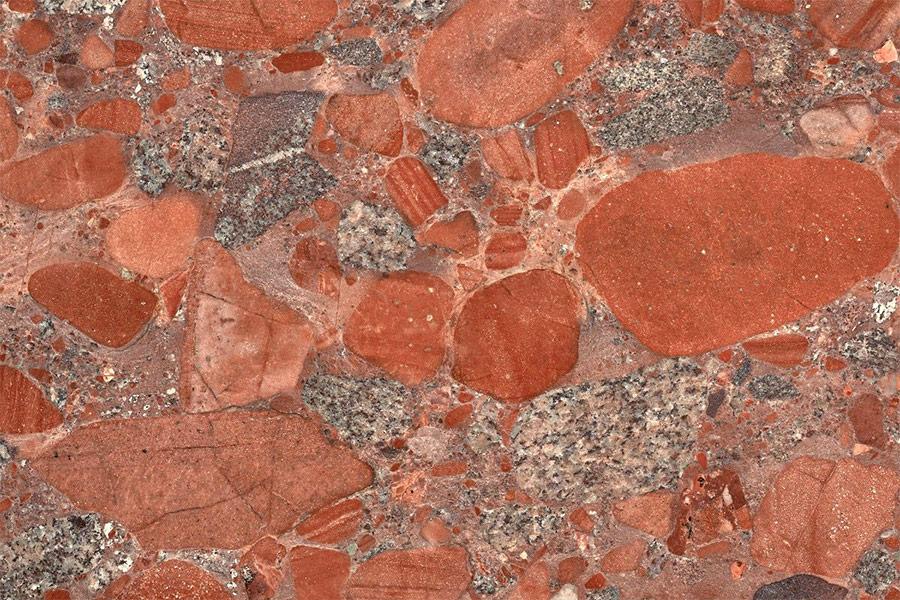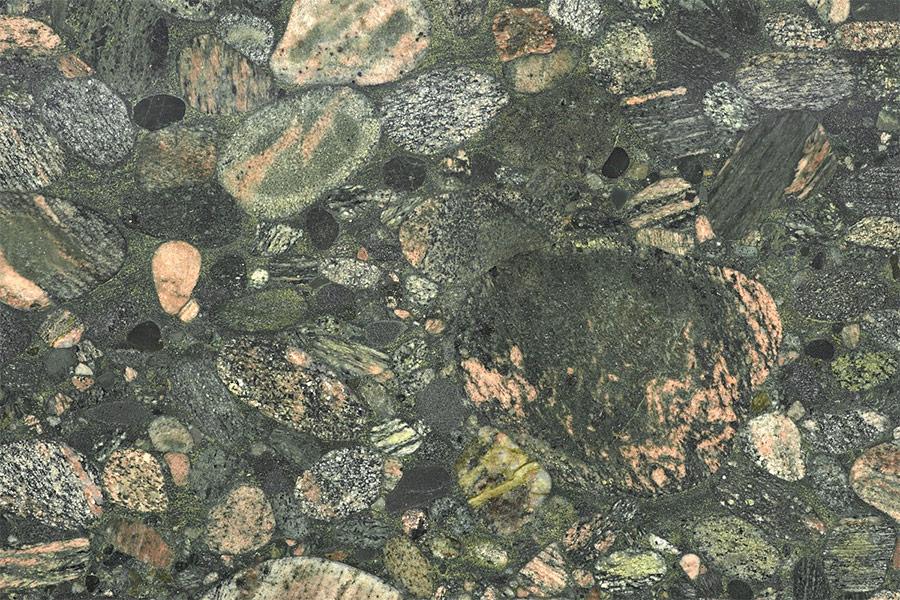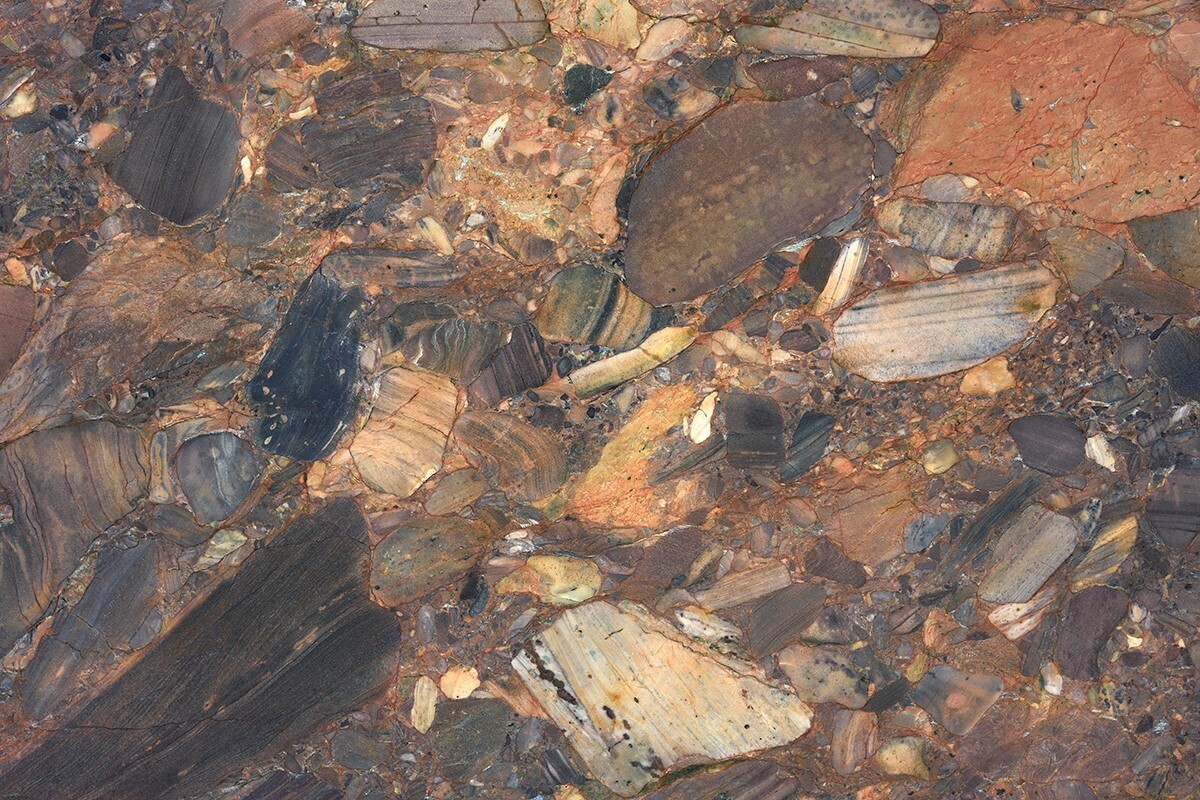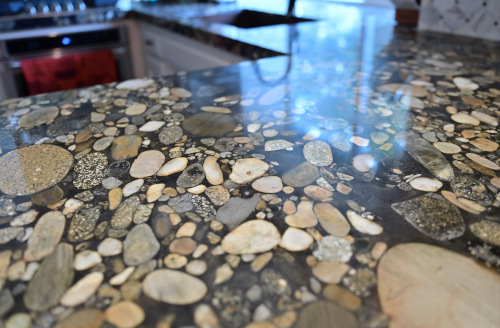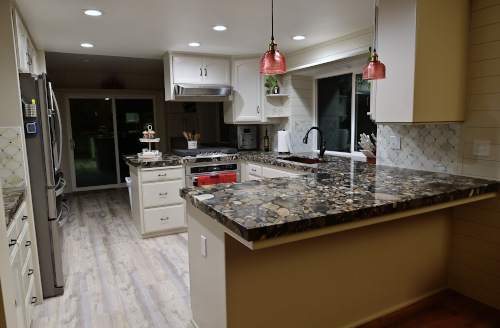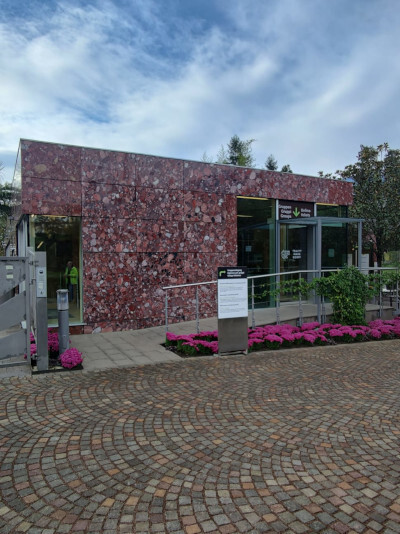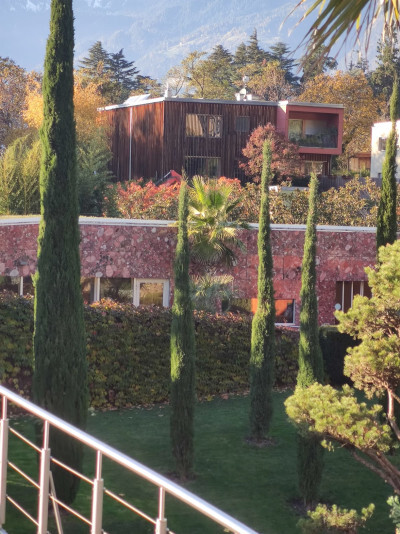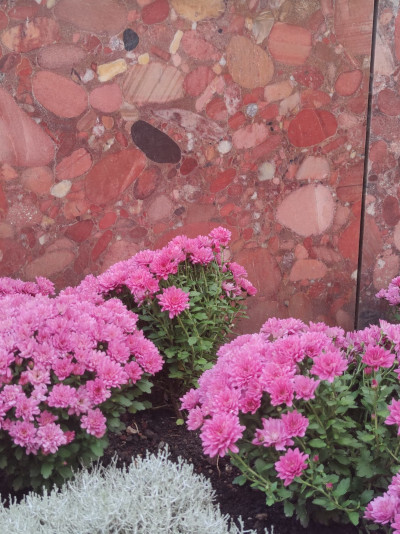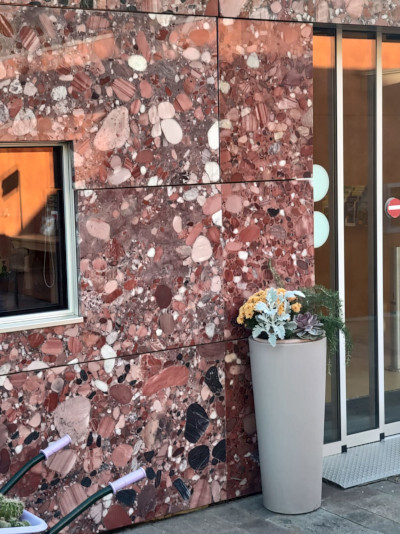Marinace belongs to a material group from Brazil that, on the trade market, is commonly referred to as granite and stands out for its special structure of colourful pebbles in natural shades.
In our warehouse you’ll find Red Marinace granite (Marinace Rosso), besides Gold Marinace, Black Marinace granite (Marinace Nero), Green Marinace granite (Marinace Verde) and Quarzite Krakatoa.
"When we were kids, we had to fetch fire stones from the river Adige, whenever the water flow was calm and the level low. We moved on a broad beach made of rounded pebble stones, grey and sandy mud and moss. When I contemplate Marinace Verde, Marinace Nero or Marinace Gold, I remember those moments."
When you look at the photos, be aware that Marinace is not an artificial material, but a completely natural one. It has not been specifically made, at least not by human hands. Humans only lend a hand to extract, cut, and polish this stone...
Origin and Physical Properties of Marinace
Due to its characteristics, Marinace should belong to granites. It is a very hard material, even harder than granite and wear-resistant like granite... But it's not granite! It is not an igneous rock, because Marinace is not a volcanic rock like granite. In fact, it is a conglomerate and therefore a sedimentary rock composed of individual rounded rocks (so-called "clastic sedimentary rocks") cemented by nature with a fine-grained material that geologists call matrix. Marinace is a polymict - conglomerate, it is composed of different sized pebbles.
These pebbles are made of various minerals. The stone’s characteristic structure depends on the glacial erosion.
Imagine a huge glacier that is thousands of meters high and dozens (or hundreds) of kilometres wide. A glacier is always in motion and changes only slowly, moving from the mountain to the valley. During these slow but continuous movements, the glacier tears off large mountain parts here and there, these parts are then blasted, crumbled, tossed, mingled, rounded, and smoothed until relatively large, round rock fragments are formed: the clasts. Its incessant activity also produces very small, microscopic pieces that form sand mud and then turn into matrix. When the glacier reaches shallower areas, the ice melts and moraines are formed: the debris disposal site of the glacier for mud and stones. In this mud matrix stones, the so-called clasts, get stuck and are covered by sludge.
If you add extremely high pressure, terrible earthquakes that shake this mass vigorously again and again and the up and down movements of the earth's crust over the course of a few million years.... that's how our Marinace was created!
Use of Marinace
We have already mentioned that Marinace is a very hard and resistant material; due to its structure, it is rather resistant to stains and scratches.
Now you only have to be patient while we cut and process the stone, and, immediately after, a kitchen top or a vanity top will be ready and available.
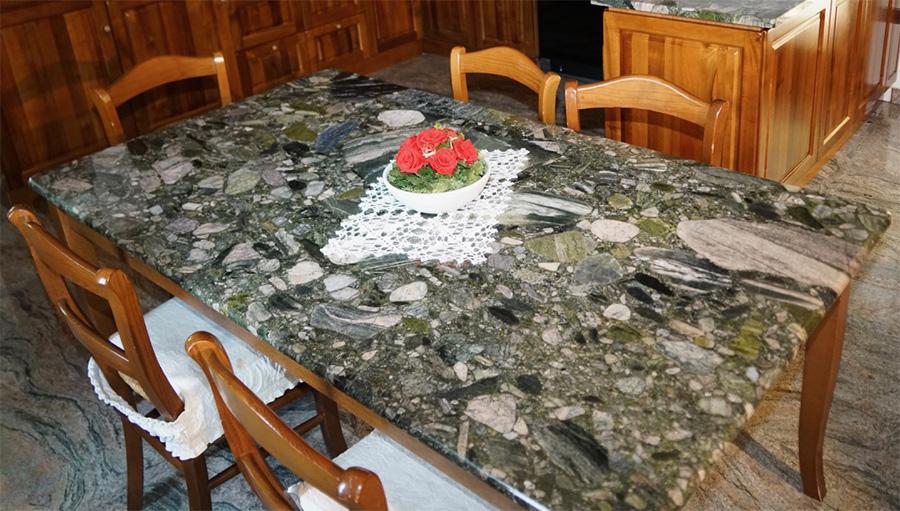 A polished surface enlightens the colours and shades of Marinace and is mainly used indoors. But don't worry, the slabs have so many different colour combinations that you will have no difficulty in finding the right colour for your furniture, floor, and cladding.
A polished surface enlightens the colours and shades of Marinace and is mainly used indoors. But don't worry, the slabs have so many different colour combinations that you will have no difficulty in finding the right colour for your furniture, floor, and cladding.
On the other hand, a satined surface gives the material physicality and volume, creating a certain silk effect and enhancing the material’s colour and texture.
In our warehouse you’ll find different types of Marinace, which differ only by their natural colorations, making them even more fascinating (to this day it is still not clear how such a variety of colours has been created by nature).
Marinace Black features dynamic colours, ranging from black to grey, with white and cream nuances, the perfect solution for design projects that require a seamless finishing.
Marinace Verde is a light green stone with beige and black pockets, ideal for furnishing your kitchen or living room, but also suitable for bathroom cladding.
Marinace Rosso is a red stone, one of the few in this extravagant colour, and probably the only one with this extraordinary large texture. The strongly coarse graining covers almost the entire bright red colour with its light or grey shades.
Marinace Gold is a very characteristic material, it seems a mosaic made of colourful and different sized pebbles on a black background. Thanks to the presence of ferrous metals, the material shows a golden colour. The circular pebbles on the slab surface harmonize perfectly when creating or cladding designer projects.
This material is particularly suitable for kitchen countertops, as we can see in the following pictures (photos of Jim and Amy Maris, a Californian couple who chose this beautiful Marinace Gold for their new kitchen).
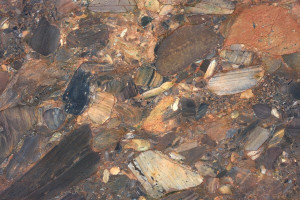 Quartzite Krakatoa (Quartzite Excalibur) is a type of Marinace that has only recently arrived in our warehouse, it is a real plastic proof of nature's amazing creativity. Actually, it is a kind of Marinace in disguise, with Sienna earth colours that evoke the colours of forests, autumn and the sunshine between leaves.
Quartzite Krakatoa (Quartzite Excalibur) is a type of Marinace that has only recently arrived in our warehouse, it is a real plastic proof of nature's amazing creativity. Actually, it is a kind of Marinace in disguise, with Sienna earth colours that evoke the colours of forests, autumn and the sunshine between leaves.
When it comes to finishing, the satined surface is the best way to accentuate the materiality of natural stone, almost giving us the impression of an amber coloured and harmonious wood panelling made of different materials. This quartzite is applied both indoor and outdoor and we invite you to check it in our online warehouse as well as on our company site.
In addition to indoor applications, Marinace is also suitable for outdoor design, such as flooring or façade and wall cladding, thanks to its exceptional hardness and wear resistance.
A shining example therefore is the cladding of the ticket booth of the magnificent gardens of the Castle Trauttmansdorf in Merano, the so-called Sissi Gardens, named after the nickname of Empress Elisabeth of Austria, as the Empress had visited the castle several times and stayed there for long periods during the second half of the nineteenth century. The garden and the castle are worth a trip to Merano: here you can admire the shiny red Marinace that fits well into the context of the garden (see photo below).
Discover Marinace Gold
Discover Marinace Nero
Discover Marinace Rosso
Discover Marinace Verde
Discover Quarzite Krakatoa

